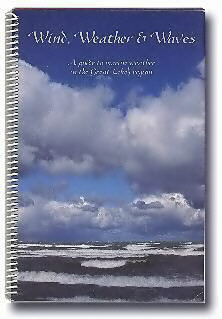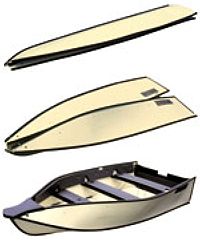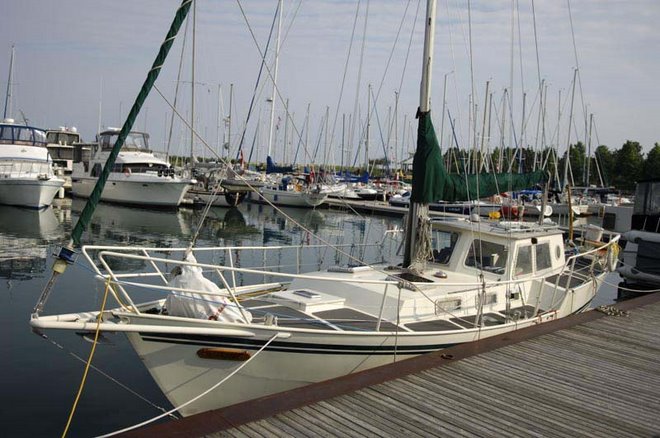 |
| The traditional "sheepsfoot" fixed blade |
 |
| These are frequently on sale and make nice sailorly stocking stuffers |
 |
| Proper rigger's knife with small marlinspike (or "marlinespike"). |
The risible thought is that we sailors are all so hopped up on grog and old hemp cables that we are prone to gang-style shiv fights, but the type of knives usually carried by sailors on deck aren't even pointed (look up "sheepsfoot", a Scrabble-winning word, as are most nautical terms). They are usually sharp enough to rapidly part a tensioned line, however, and the best are either straight or are folders able to be deployed one-handed. This is important in the context of, for instance, freeing oneself from a line that is dragging one underwater...you might need the other hand to attract attention or to maintain some kind of proximity to the surface. Sailors' knives will often feature a regular ground edge and a serrated edge for a rapid sawing movement; some full-blown "riggers' knives" have marlinspikes for splicing and little tools for dealing with turnbuckles, split rings or pins and other fiddly objects aboard.
I didn't always carry a knife while sailing, but now I always do. I carry cheap knives because I lose them, but I keep them fully sharp and completely functional while they are in my customarily brief care. I will probably buy one of those fabulous, hundred-dollar riggers' knives before we leave, but I'll want a Dyneema lanyard to keep it attached to me.
As to why I now always have a knife: About the second year I had my first boat, I was single-handing in fairly brisk wind off the land, so there was only "nervous" seas, but plenty of air. The boat was sailing nicely and I had the tiller pilot on.
I stupidly (the adverb that precedes "experiencedly") went down on the lee side to retrieve dunked fenders as the boat started to cross an open estuary, and the wind was funnelled there to much higher speeds (I suspect 40 knots as it was already 25-28 knots). I had on neither tether nor PFD nor handheld radio, and we were welll knocked down, with the cold October water of Lake Ontario up to my hips. By arm strength alone, I crawled up to the coach house traveller and managed to release the mainsheet, which flew out with such speed that it took part of the flesh on my fingers with it (Yes, now I wear gloves, as well!). The boom went out and the boat found her feet, and I spilled air until I could tie up my hand and continue. The autopilot had simply been overwhelmed at that point.
Had I a knife on me , I might have had the option of cutting the mainsheet instead of releasing it from an awkward "too close for comfort" position. I had plenty of line on board to rereeve the blocks and to get back to sailing.
A couple of seasons later, after I started to carry a knife, we rounded a sheltered point with an old No.1 genoa up and again, the wind went from 8 knots to 22 knots very quickly. The leech line of this sail hooked on a spreader end, making it difficult if not impossible to douse (hank-on sail with no downhaul). Going off the wind didn't help...the leech line was somehow hooked deeply into the spreader end (yes, I now tape off the spreader ends.)
Once the sail began to rip, I got out the knife, told my seven-months-pregnant wife to "feather the main close to head to wind" and stood on my toes to cut the leech line. I was then able to drag the mess down and we sailed into our basin under main only.
I have also cut off a piece of trailing line that threatened to foul a moving prop, but that was on another boat.
As can be seen, inexperience or lack of anticipation led in part to bad situations, but there's a place for a small, sharp knife on board any boat, I think, and now it's habit for me to carry an inexpensive sailor's knife (serrated edge) on my belt, plus an inexpensive multi-tool. I use the multi-tool far more often as I am forever tightening bolts or screws or other fasteners both above and below deck. I go "inexpensive" because it's not tragic if a ten-dollar knife or multi-tool is sacrificed to Neptune.
I am aware that slicing a loaded line brings its own issues, but I still believe that lines are cheaper than limbs, and sometimes you have a need to cut away a line to save limbs, life or more important parts of the boat. The idea of disposable "lashings", small stuff you can slash with impunity to free it from a secure state, depends on having a very sharp knife and being able to deploy in in a dynamic environment without hurting yourself.
 |
| I find the cheaper sort of divers' knife can be mounted on nav station or companionway frame for retrieval in passing, should you have no pants on. Seriously. |
If you have a steel boat, it's easy to have them magnetically stuck to things a sufficient distance from the compasses. I have one by the companionway and even a hand axe under a locker lid. I also carry pretty beefy chain cutters in case I have to neuter a whale.
A friend who dives and also owns a steel boat has a pretty serious dive knife mounted next to his companionway steps so that he can grab it and unsheath it with his trailing hand as he hauls himself into the cockpit, so it's not so uncommon a practice.
 |
| The inherited knife is very much like this. |
My favourite knife is a pretty utilitarian Solingen blade with a leather grip. There is nothing at all remarkable about it except that it belonged to my late father who wore it as a merchant seaman for a number of years in the 1940s and 1950s. This knife was used to cut out a tooth from a sperm whale (yes, they were different times...), which I also have, along with an excellent example of Carl Zeiss 7 x 50 binoculars my dad picked up in post-war Hamburg for a pittance, apparently advertised as "U-Boot Kapitan Glasses". And thus concludes today's pointed remarks.



















































